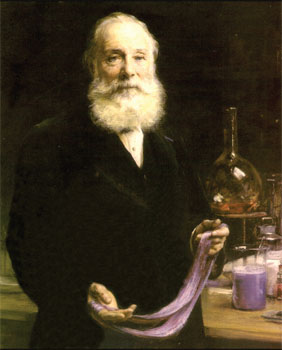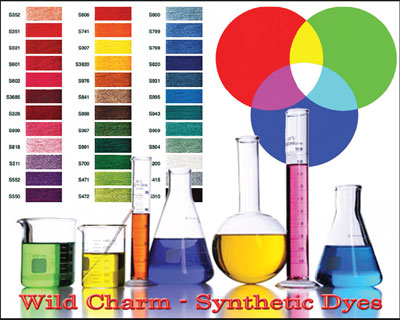Discovery of the First Synthetic Dye
by Sumana Saparamadu
You know what a dye is, don't you? It is the stuff dissolved in water
giving it a particular colour. Cloth paper, soaked in that water takes
on that particular colour. Hair is also dyed by washing in water in
which a dye has been dissolved. Dyeing is this process of giving a
tinge, a colour to something.
|

William Henry Perkin |
There are natural dyes and synthetic (man made) dyes.
The blue got from the leaves and stem of the indigo plant is a
natural dye. The leaves of the henna plant give an orange-red dye.
Cochineal (red) is got by crushing cochineal insects.
Dyeing with natural dyes has been practised from ancient times in
China, India, Egypt and ancient Greece. In the past, until about the
beginning of the last century, Buddhist monks dyed their robes yellow by
soaking them in water in which pieces of jak wood was boiled. Now things
have changed. Monks are offered robes all dyed with synthetic dyes, sewn
and ready for wear.
Today natural dyes are hardly ever used. Synthetic dyes have replaced
them.
A synthetic dye is a man-made dye - made by mixing various carbon
containing compounds.
This is the story of the discovery of the first Synthetic dye.

William Henry Perkin had studied Chemistry at the Royal College of
Chemistry in London. At the time of his discovery, he was working as a
Lab Assistant to professor Wilhelm Von Hoffman.
After reading one of Prof. Hoffman's scientific papers Perkin was
full of ideas. He tried to make quinine from coal tar. Quinine was got
from the bark of the cinchona tree that grows in Malaysia. It was the
drug given to Malaria patients.
Perkin's attempt was a failure, but in the course of experimenting,
he found some brilliant purple crystals in the middle of the sludge -
the mud-like stuff left over. These purple crystals stained anything
they touched. The stain did not go off with washing. This stain was the
colour we call mauve today.
It was by accident that Perkins made this discovery. But it was a
very important discovery. William Henry Perkin had discovered a method
of making dyes in the laboratory.That was in 1857 and Perkin was only 18
years old.
The next year he borrowed money from his father and brother and set
up a factory near Harrow, a few miles from London. He also got a patent,
that is a letter from the King, giving him the exclusive right to
manufacture the mauve dye.In 1860, Perkin and a colleague (person
working with him) developed another Synthetic dye. They named it
Alizarin.
By the age of 35, Perkin had made so much money manufacturing dyes,
that he retired.
Other chemists in other countries followed Perkin's example, and
discovered other synthetic dyes.
Magenta, is a synthetic dye developed in France in 1859. In the
Summer of that year, Napolean III defeated the Austrians in the town of
Magenta in N. Italy. The French chemists were so proud of the King's
victory that they named the dye they had developed, Magenta - the site
of the victory. Magenta is a brilliant crimson Analine dye. Analine is
the oily liquid got from coal tar. |


